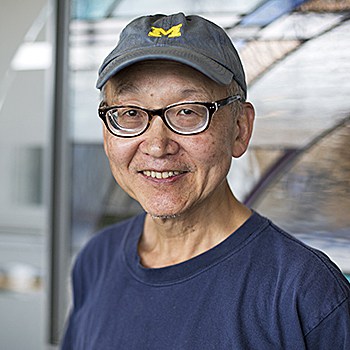Location
Chemical Engineering
3024 H.H. Dow
2300 Hayward St., Ann Arbor, MI 48109-2136
Phone
(734) 763-5659
Education
Massachusetts Institute of Technology
PhD ’77
MS ’74
Iowa State University
BS ’72
Research Interests
Biopharmaceutical Engineering. The global healthcare sector, comprised of pharmaceutical, biotechnology, medical device companies, regulatory agencies such as FDA, healthcare providers, insurers and consumers, is a dynamic and unique entity, rapidly moving towards highly automated and electronic environments in which the storage, management, and use of complex information is essential for success. Some of the key research topics in Biopharmaceutical Engineering include: design of personalized medicine for global health, rapid vaccine and drug development during pandemics, and regulatory science and engineering for biomedical innovation.
Bioprocessing for Sustainable Development. A sustainable and environmentally sound economy requires the development of a new generation of ecologically compatible manufacturing processes. Bioprocessing and biotechnology should have a significant impact on this development. New and sustainable bioprocesses can be designed to manufacture biofuels, specialty chemicals and pharmaceuticals. A systematic approach of developing a reconfigurable network for biomass to bioenergy/bioproduct processes by integrating both chemical and biological reactions and the use of advanced manufacturing science with process intensification is currently being investigated.
Courses Taught
- ChE 343 – Separation Processes
- ChE 360 – Chemical Engineering Laboratory I
- ChE 460 – Chemical Engineering Laboratory II
- ChE 517 (MFG 517) – Biochemical Engineering
- ChE 519 (Pharm 519) – Pharmaceutical Engineering
- ChE 596 (Pharm 596) – Health Science and Engineering Seminar
- ChE 597 (Pharm 597) – Regulatory Issues for Scientists, Engineers, and Managers
- ChE 598 – Advanced Special Topics in Chemical Engineering
- ChE 696 – Selected Topics in Chemical Engineering
Publications
- Nelson, M., Zhu, L., Thiel, A., Wu, Y., Guan, M., Minty, J., Wang, H., and Lin, X. “Microbial Utilization of Aqueous Co-products from Hydrothermal Liquefaction of Microalgae Nannochloropsis oculata”. Bioresource Technology. In Press, 2013.
- Valdez P.J., M.C. Nelson, H.Y. Wang, N. Lin., and P. E. Savage “Hydrothermal Liquefaction of Nannochloropsis sp.: Systematic Study of Process Variables and Analysis of the Product Fractions” Biomass and Bioenergy, 46:317-331, 2012.
- B.H. Junker and H.Y. Wang, “Bioprocess Monitoring and Computer Control: Key Roots of the Current PAT Initiative,” Biotechnology and Bioengineering, 95 (2), 226-261, 2006.
- J. M. Miller, U. J. Kale, K. Lau, L. Greene, and H. Y. Wang, “Rapid Estimation of Kinetic Parameters for Thermal Decomposition of Penicillins by Modulated Thermogravimetric Analysis” Journal of Pharmaceutical and Biomedical Analysis, 35, 65-73, 2004.
- L. Mendricks, J. VanRoeyen, and H.Y. Wang, “The Future of Pharmaceutical Engineering,” Journal of Pharmaceutical Science, 93 (2), 235-238, 2004.
- A. Shotipruk, P.B. Kaufman, and H.Y. Wang, “Conceptual Design of LED Based Hydroponic Photobioreactor for High Density Plant Cultivation,” Biotechnology Progress, 15 (6), 1058-1064, 1999.
- Dykstra, K.H. and H.Y. Wang. ” Monitoring Intracellular Protein Profiles with Two-Dimensional Gel Electrophoresis” Biotechnol Progress, 8:369-374, 1993.
- Chen, J.C. and H.Y. Wang. ” Process Monitoring of Dissolved Oxygen Using A Computerized Pulsing Membrane Electrode” Biotechnol. Progress, 9:75-80, 1993.
- Evans, P.J. and H.Y. Wang. “Enhancement of Butanol Formation by Clostridium acetobutyricum in the Presence of Decanol-Oleyl Alcohol Mixed Extractants,” Applied Environmental Microbiology, 54 (7), 1662-1667, 1988.
